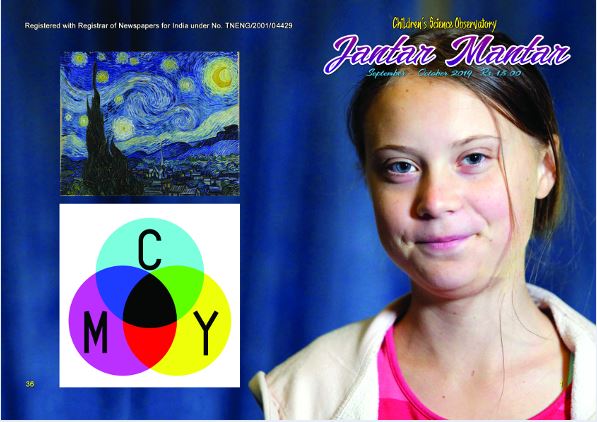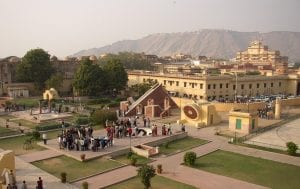
Jantar Mantar, the only science magazine in English in TN turns 25

Publishing a magazine for children could be a challenge in any language. It was at least the case in Tamil language. Take Chutti Vikatan, the children’s magazine published by the 90-year-old publication Vikatan for instance. After being published for almost 20 years, the magazine had to be taken off the shelves for the lack of advertisement. When a magazine like Chutti Vikatan, containing a smorgasbord of contents for children became defunct, one can understand the challenges faced by magazine dedicated to science. One such magazine that has withstood the test of time is ‘Jantar Mantar’, a science magazine which is celebrating its silver jubilee this year.
Launched in January 1993, Jantar Mantar is a publication brought out by the Tamil Nadu Science Forum (TNSF). The idea to start a magazine was pitched in 1980 by a group of research scholars from the Physics department of the University of Madras, to popularise science. And over the years, the magazine has had a positive effect on children, say members of TNSF.
“The magazine helped children, the chief readers of this magazine to develop some amount of independent independence, rationalism and scientific attitude in their thoughts. And we think these are the main success of the magazine,” said Prof R Ramanujam, department of Theoretical Computer Science, Institute of Mathematical Sciences (IMSc), Chennai.
Birth of Thulir
TNSF had earlier conducted a host of science lectures. “But by starting a magazine, wanted to take science to the common man. That is how Thulir was born,” says Ramanujan.
Started on November 14, 1987, Thulir was a science magazine in Tamil which completed 32 years this year.
However, the real turning point came in 1990. That was the time when ‘Arivoli Iyakkam’ (the light of knowledge movement) came into force, giving adult education a shot in the arm in Tamil Nadu, he said. It was a time when the organisation which earlier interacted with children in school touched base with those in slums and rural parts of the state to create more awareness on science education. Such trips and interactions helped in building a strong foothold for Thulir in rural parts of the state.
Expanding base
While Thulir catered to the needs of rural children and those in elementary levels, TNSF started Jantar Mantar in 1993 to reach urban and secondary level students.
“The English magazine has a wider reach in the cities like Chennai, Trichy, Coimbatore, Neyveli, Nilgiris and Tirunelveli. Unlike Thulir, in which most of the articles are written by voluntary contributors who are not from the scientific community, Jantar Mantar carries articles mostly by the practising scientists,” says Ramanujam.
During the launch of the magazine, TNSF was in touch with many science enthusiasts, who were later congregated under the umbrella of All India People Science Network.
“The aim of the network is to translate articles published in Jantar Mantar to other regional languages, so that children from those languages can benefit. But it did not happen due to lack of facilities,” says Prof D Indumathi, a faculty in the department of Theoretical Physics, IMSc and also an editor of Jantar Mantar.
No compromise on content
Printed on newsprint in a black and white format, all the editorial and layout work of the magazine are done with the help of voluntary contributions by IMSc staff. The magazine also has contributors from other science institutions like Chennai Mathematical Institute, Indian Institute of Technology (Madras), Indian Institute of Science and Raman Research Institute from Bengaluru.
“We have 20 regular contributors. They are both practising and retired scientists. We own no copyright and whoever is interested can use our articles,” says Indumathi.

Many children who grew up reading the magazine now contribute articles to it, she says.
One of them is S Narayani, a marine biologist based in Port Blair, who regularly writes for the magazine. “I have been reading the magazine since my school days. Although I was studying in an English medium school, I used to read ‘Thulir’ to see how scientific facts are communicated in Tamil. While Thulir carries popular science articles, Jantar Mantar publishes articles related to mathematics. Reading it on a regular basis created an interest in me for numbers,” says Narayani.
“Those were the times when even school textbooks were in black and white and so we didn’t worry about the colours. But today children want their reading materials to be colourful. Though that expectation has not been met, the editorial board never compromises on the quality of articles. All the articles are originally written and not downloaded from the web,” she says.
Jantar Mantar, a bi-monthly magazine costing ₹20 per copy sells 10,000 copies a month. Thulir, costing ₹10 sells 50,000 copies per month. “Both the magazines are running through subscriptions. With the help of TNSF, we are able to build a network of 1,000 school teachers across the state. They take care of distribution of the magazines. There are students who cannot afford even ₹10 and hence we introduced ‘Thulir Illams’ (Thulir Houses) and ‘Jantar Mantar Clubs’ in schools, to enable students to read these magazines,” said Ramanujam.
Offering more than science
The magazines are not completely based on science, but also carry historical facts related to science, interviews of scientists and stories on environment. It also provides career guidance in the field of science. “We wanted to keep the magazines not rigidly as science. At the same time we wanted the magazine to be completely apolitical” said Indumathi.
The other major contribution of TNSF is the National Science Congress. “Every year several schools students come up with ideas inspired by these magazines. Science should not be seen as a subject. It is a day to day activity,” Ramanujam says.
He, however, worries that there is no competition for these magazines. “We do have science magazines like Science Reporter and Dream. But they are published by the government. Other than that there is no competition for our magazine as it was before like ‘Science Today’. In Tamil, the condition is worse. Only a handful of writers are able to write about science in Tamil,” he adds.


